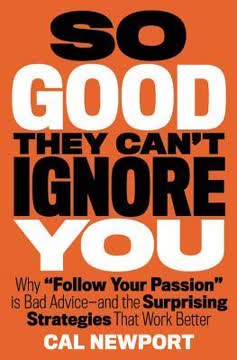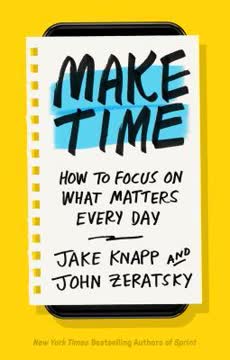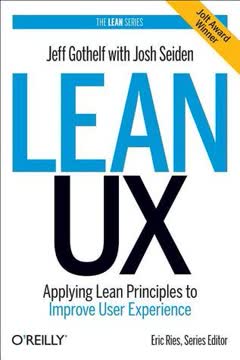Key Takeaways
1. Agile, Lean, and Design Thinking: Complementary but Often Misaligned
"Our tech teams are learning Agile. Our product teams are learning Lean, and our design teams are learning Design Thinking. Which one is right?"
Complementary philosophies, divergent practices. Agile, Lean Startup, and Design Thinking are powerful methodologies that, when properly integrated, can create high-performing digital product teams. However, in many organizations, these approaches are implemented in isolation, leading to confusion and inefficiency.
Misalignment causes friction. Engineering teams focus on shipping code, product managers prioritize efficiency and waste reduction, while designers advocate for lengthy research phases. This siloed approach often results in products that fail to meet customer needs or business objectives.
Integration is key. To harness the full potential of these methodologies, organizations must:
- Understand the core principles of each approach
- Identify areas of overlap and synergy
- Create a unified framework that leverages the strengths of each methodology
- Foster cross-functional collaboration and shared goals
2. Agile: Responding to Change Over Following a Plan
"At the core of that philosophy is this phrase, 'We value responding to change over following a plan.'"
Embracing uncertainty in software development. Agile emerged as a response to the unpredictable nature of software projects. It acknowledges that market conditions, customer needs, and technical complexities can change rapidly during development.
Key Agile principles:
- Work in short cycles (sprints)
- Reflect and adapt at the end of each cycle
- Prioritize customer value over rigid plans
- Empower teams to make decisions
DevOps and continuous delivery. The rise of DevOps practices has further enhanced agility by enabling teams to:
- Ship code continuously
- Gather immediate feedback
- Quickly iterate and improve features
3. Lean Startup: Validating Ideas Through Experimentation
"The question that experiment seeks to answer is not, 'Can we build it?' it's, 'Should we build it?'"
Hypothesis-driven product development. Lean Startup emphasizes the importance of validating assumptions before investing significant resources in building a product or feature.
Key Lean Startup concepts:
- Minimum Viable Product (MVP)
- Build-Measure-Learn feedback loop
- Pivot or persevere decisions based on data
Common misinterpretations: Many organizations misunderstand the MVP concept, treating it as a stripped-down version of the final product rather than a learning tool. To effectively implement Lean Startup:
- Focus on learning, not just shipping features
- Embrace the possibility of pivoting or killing ideas
- Create a culture that rewards experimentation and learning from failures
4. Design Thinking: Empathy-Driven Problem Solving
"Design Thinking teaches teams to take an empathetic look at the customers they are building products for to understand the core needs being addressed."
Human-centered innovation. Design Thinking emphasizes understanding and solving user problems through empathy, ideation, and iteration.
Key Design Thinking stages:
- Empathize: Understand user needs and pain points
- Define: Clearly articulate the problem to be solved
- Ideate: Generate diverse solution ideas
- Prototype: Create low-fidelity representations of ideas
- Test: Validate prototypes with real users
Challenges in implementation: Many organizations struggle to integrate Design Thinking effectively, often relegating it to isolated workshops or brainstorming sessions. To maximize its impact:
- Make empathy and user research ongoing practices
- Involve cross-functional teams in the design process
- Use Design Thinking tools throughout the product lifecycle, not just at the beginning
5. Short Cycles and Regular Retrospectives Drive Continuous Improvement
"Retrospectives are the heart of continuous improvement."
Iterative development and reflection. Working in short cycles allows teams to gather feedback quickly and adjust course as needed. Regular retrospectives provide a structured opportunity to reflect on processes and outcomes.
Implementing effective retrospectives:
- Hold retrospectives at the end of each sprint or cycle
- Create a safe space for open, honest feedback
- Focus on actionable improvements
- Limit the number of changes to implement each cycle
- Follow up on previous action items
Experimentation mindset. Treat process changes as experiments:
- Introduce new practices for a limited time (e.g., two sprints)
- Evaluate their effectiveness
- Keep what works, discard what doesn't
- Scale successful practices to other teams
6. Customer-Centricity is Paramount in Product Development
"Without customers, there is no business. There is no team. There is no product."
Aligning efforts with customer value. Regardless of the methodology used, keeping the customer at the center of all activities is crucial for success.
Key questions to ask regularly:
- How do we know we're shipping something users care about?
- How do we find out?
- How does that affect what we prioritize?
Implementing customer-centricity:
- Establish regular customer touchpoints (e.g., user testing, interviews)
- Involve the entire team in customer research
- Use customer insights to inform prioritization decisions
- Measure success based on customer outcomes, not just features shipped
7. Balanced Teams Outperform Siloed Disciplines
"The atomic unit of planning for any project is the team."
Cross-functional collaboration. Balanced teams comprising designers, engineers, and product managers can tackle complex problems more effectively than siloed groups.
Characteristics of balanced teams:
- Shared goals and metrics
- Diverse skillsets and perspectives
- Autonomy to make decisions
- Collaborative problem-solving
Breaking down silos:
- Co-locate team members when possible
- Use shared tools and communication channels
- Conduct cross-functional training and skill-sharing sessions
- Align incentives and performance metrics across disciplines
8. Prioritize High-Risk Hypotheses for Efficient Product Discovery
"Balance product discovery with delivery work by only testing high-risk hypotheses."
Focus on critical uncertainties. Not every assumption needs to be tested. Prioritize product discovery efforts on the riskiest and most valuable hypotheses.
Identifying high-risk hypotheses:
- Involve the entire team in risk assessment
- Consider technical, design, and market risks
- Evaluate potential impact and likelihood
Efficient discovery techniques:
- Tech spikes for technical risks
- A/B tests or landing page tests for value propositions
- Contextual site visits for problem validation
Balancing discovery and delivery:
- Integrate discovery activities into regular sprint cycles
- Time-box discovery efforts
- Share learnings broadly to inform future work
9. Frequent, Lightweight User Research Yields Better Results
"Do less research, more often."
Iterative research approach. Instead of large, infrequent research efforts, conduct smaller, more frequent studies to maintain a continuous feedback loop.
Benefits of lightweight research:
- Faster insights and iteration
- Increased team participation and buy-in
- Lower cost and resource investment
- More opportunities to course-correct
Implementing lightweight research:
- Test with fewer participants (e.g., 3-5 instead of 12+)
- Conduct research in-house rather than offsite
- Share findings immediately after each session
- Involve cross-functional team members in research activities
10. Transparency and Aligned Incentives Foster Collaborative Innovation
"As new processes are rolled out, ensure that it's clear why you're trying something new."
Open communication. Transparency about goals, processes, and outcomes builds trust and encourages collaboration across teams and disciplines.
Implementing radical transparency:
- Share success metrics publicly
- Hold open retrospectives
- Communicate the rationale behind process changes
- Be honest about challenges and failures
Aligning incentives:
- Review and adjust performance management criteria
- Reward collaboration and learning, not just output
- Recognize and celebrate cross-functional successes
- Encourage calculated risk-taking and experimentation
Culture shift: Creating a culture of transparency and aligned incentives requires:
- Leadership commitment and modeling
- Consistent messaging and reinforcement
- Patience and persistence in driving change
- Continuous evaluation and adjustment of processes and metrics
Last updated:
Review Summary
Lean vs. Agile vs. Design Thinking receives mixed reviews. Many find it a concise, useful overview comparing the methodologies, praising its clarity and practical advice. Some appreciate its brevity, while others criticize it as too superficial. Readers value the insights on integrating approaches and focusing on customer needs. However, some feel it lacks depth and concrete guidance. The book's short length is both praised for accessibility and criticized for limited content. Translation issues and grammatical errors are noted in non-English versions.
Similar Books










Download PDF
Download EPUB
.epub digital book format is ideal for reading ebooks on phones, tablets, and e-readers.







